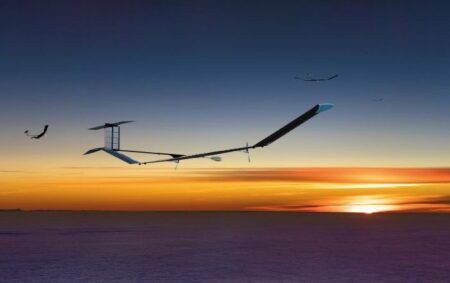Stephan Carignan has earned his wings. Throughout his 32-year career, he has flown more than 6,700 hours on 45 different types of aircraft. His résumé includes serving as a pilot for the Royal Canadian Air Force and working as a flight test engineer for Bell Helicopter.
Carignan’s international collaborative work to improve fly-by-wire control laws and vision systems has garnered several awards, including from the American Helicopter Society and the Technical Cooperation Program (TTCP). Most recently, he was recognized by the Royal Aeronautical Society with a Bronze Medal for contributing to major advances in aeronautics, and the coveted Alan Marsh Medal for outstanding international achievement in the testing, development and operational evaluation of rotorcraft. Currently group leader for the National Research Council Canada’s (NRC) Flight Mechanics and Avionics Program, Carignan is a leading light in worldwide rotorcraft advancements.
Q: What made you decide to become a test pilot?
A: From a very young age, I knew I wanted to fly. I got my glider’s licence before I learned how to drive. My father was an airplane mechanic in Bagotville, Quebec, which of course made an impression on me. Then I joined Cadets Canada when I was 12 years old, and they took us flying and the bug just bit me early on. A couple of years later, I attended a high school that was located on the military base where my father worked. There wasn’t a bus system in place, so when my father couldn’t drive me home, I’d get rides from other military personnel.
One day, I got a ride home from a test pilot. He told me about what he did for a living, and after that, I knew what I wanted to do. I was really intrigued by the idea of being able to test aircraft and systems and make them better, and figure out the engineering aspects and how the equipment worked. So even before I got my aircraft wings, I knew I wanted to become a test pilot.
Q: Where did you train?
A: I studied mechanical engineering at the Royal Military College, Canada. After graduating in 1984, I spent about a year and a half training to be a military helicopter pilot, before going to Halifax, Nova Scotia, to train with my operational squadron until 1989. Then the Canadian Forces sent me to the École du Personnel Navigant D’essais et de Reception (EPNER) test pilot school in Istres, France, where I trained for another year. The forces typically send one helicopter pilot a year, so it was a privilege and an honour to be chosen.
Q: Where were you first posted after completing your test pilot training?
A: In 1990, I was posted to the Aeronautical Engineering Test Establishment (AETE) squadron in Cold Lake, Alberta, where I worked for four years. It was an exciting time to be there, because the forces were developing several different ships and trying new securing systems to assist with the recovery of helicopters on board ships. So although I was posted in Cold Lake, I spent a lot of time doing trials at sea. I did First of Class Flight Trials (FOCFT) for the Halifax-class and Iroquois-class ships (then called City and Tribal-class). Qualifying a new ship is quite an endeavour and takes several months of work; it was definitely a highlight of my time at Cold Lake. I also tested new navigation systems, the use of night vision goggles and automatic approaches onto ships – technologies that are only now being introduced to the Canadian navy, almost 18 years after I conducted the trials. It’s exhilarating to get to test those technologies so far in advance.
Q: What took you from the military to your current position at the National Research Council of Canada (NRC)?
A: I left the military in 1995, as a captain, and took a position as a flight test engineer with Bell Helicopter. I got to be part of the team that certified the Bell 407, which was an incredible experience. After a year at Bell Helicopter, a Research Test Pilot job opened up at NRC’s Flight Research Laboratory (FRL), so I jumped at the opportunity. I’m now Group Leader for the FRL’s Flight Mechanics and Avionics Program.
Q: What are your main responsibilities with the Flight Mechanics and Avionics Program?
A: In testing aircraft, we’re concerned with the crew member and how he or she interacts with the aircraft. We examine what the cockpit looks like, from a user interface perspective, and how the aircraft itself performs. We have several different streams: there’s an aviation medicine stream that looks at neurosciences and human factors; an aerodynamics stream that tries to model helicopters to better understand how they respond without augmentation; and control law and system development streams that aim to make it easier to fly the helicopter in all weather conditions.
I’m also part of a team that is involved in several initiatives that are aimed at reducing aircraft certification times. We train test pilots from schools in four countries – Canada, England, France, and the USA. Our work involves improving their abilities as evaluators, and enhancing how a flight test engineer plans and executes testing. That largely entails exposing the pilots to a range of aircraft deficiencies and teaching them how to evaluate those deficiencies. In addition to the training we offer, we have a research stream that aims to develop smarter flight test engineer software that will expedite testing. We’re looking at better calibration techniques that would automatically alert pilots to things like a failed aileron deflection sensor. Our team is also exploring video-based data recognition. For example, instead of installing sensors to measure torque, we could have digital software transfer a video image to the torque gauge, giving us an instant reading with just one glance at the gauge. All of these flight research developments could help us greatly reduce certification times.
Q: What are some of your proudest career accomplishments?
A: Winning The Technical Cooperation Program (TTCP) group award for Enhanced Synthetic Vision and the Royal Aeronautical Society (RAeS) awards were two big highlights. The TTCP award was more specific; it was given for my collaborative work in developing up-and-coming technologies, such as better night vision goggles – for example, color goggles or goggles that offer improved peripheral vision.
We also developed synthetic vision systems that could be coupled; you’d have a simulator view of the world, but also a penetrating display that would synch up to it, offering improved visibility in even the most challenging flight conditions. On the other hand, the RAeS awards represented the culmination of many years of hard work. In particular, I was recognized for my involvement in establishing design criteria for maritime helicopter manufacturers; commissioning the Flight Research Laboratory’s 4th generation fly-by-wire helicopter; improving fly-by-wire control laws with Sikorsky and Bell Helicopter; gathering the flight data package required to satisfy Level D simulation modeling requirements for a wide range of helicopter types; and training a large majority of western helicopter test pilots and engineers in handling quality evaluations and flight test techniques.
Q: Where do you see the next few years taking
you and the rotorcraft industry?
A: We have to improve the ease of handling of the helicopter and provide the pilots with an ability to see through bad weather. This is where improved control
laws and enhanced vision and symbology come in.
We are at a threshold where we could essentially hit a button and have the aircraft fly and land itself. Once we achieve that, we could apply the technology to shipboard landings, which is one of the most difficult things to do. We’re moving towards implementing those technologies within the next five to ten years. So we’re on a pretty exciting path.
Interview by Chris Hounsfield, editor of Aerospace Testing International Magazine




